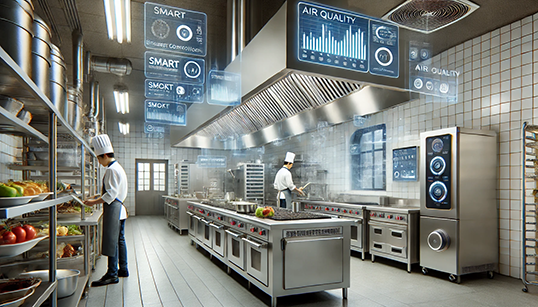Commercial kitchens run hot—literally. Between grills, fryers, ovens, and the rush of service, air quality and temperature can spiral fast without solid ventilation. Traditional systems have done the job, but new tech is raising the bar. From smarter energy use to cleaner air and easier maintenance, innovations in kitchen ventilation are reshaping how professional kitchens operate.
Here’s what’s changing—and why it matters.
1. Demand-Controlled Ventilation (DCV)
One of the biggest upgrades in modern systems is intelligence. Demand-Controlled Ventilation uses sensors to adjust airflow based on real-time cooking activity. Instead of running at full blast all day, the system ramps up only when needed.
Why it matters:
-
Cuts energy use by up to 50%
-
Reduces noise levels during downtime
-
Lowers operating costs significantly
2. UV-C and Electrostatic Air Cleaning
New ventilation systems are integrating UV-C light and electrostatic precipitators to clean the air before it's exhausted. These technologies break down grease, smoke, and odors right in the hood.
Why it matters:
-
Keeps ducts cleaner, reducing fire risk
-
Cuts down on odor complaints
-
Lowers maintenance frequency and costs
3. Integrated Fire Suppression
Fire suppression isn’t new, but modern systems now blend it more seamlessly with ventilation. Some even offer automatic inspection alerts or digital monitoring.
Why it matters:
-
Faster fire response
-
Easier compliance with safety codes
-
Less downtime after incidents
4. Smart Monitoring and Analytics
Some ventilation systems now come with IoT-enabled dashboards. Kitchen managers can track airflow, filter status, and temperature in real time from a tablet or phone.
Why it matters:
-
Predicts maintenance before problems hit
-
Helps balance performance and cost
-
Offers data for sustainability tracking
5. Quieter, More Aesthetic Designs
For open kitchens and customer-facing spaces, ventilation systems are getting sleeker and quieter. Manufacturers are focusing on low-noise fans, streamlined hoods, and better integration with overall kitchen design.
Why it matters:
-
Improves the dining experience in open kitchens
-
Reduces noise fatigue for staff
-
Elevates the brand image
Final Thoughts
In today’s competitive foodservice landscape, kitchens need to be efficient, safe, and pleasant to work in. New ventilation tech is helping them get there. Whether it’s reducing energy bills, improving air quality, or making kitchens safer, these innovations aren’t just upgrades—they’re strategic advantages.
If you're planning a new build or a retrofit, don’t overlook the hood. It’s doing a lot more than just sucking up smoke these days.

